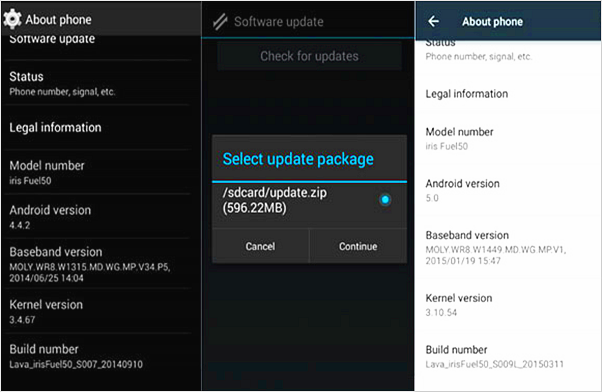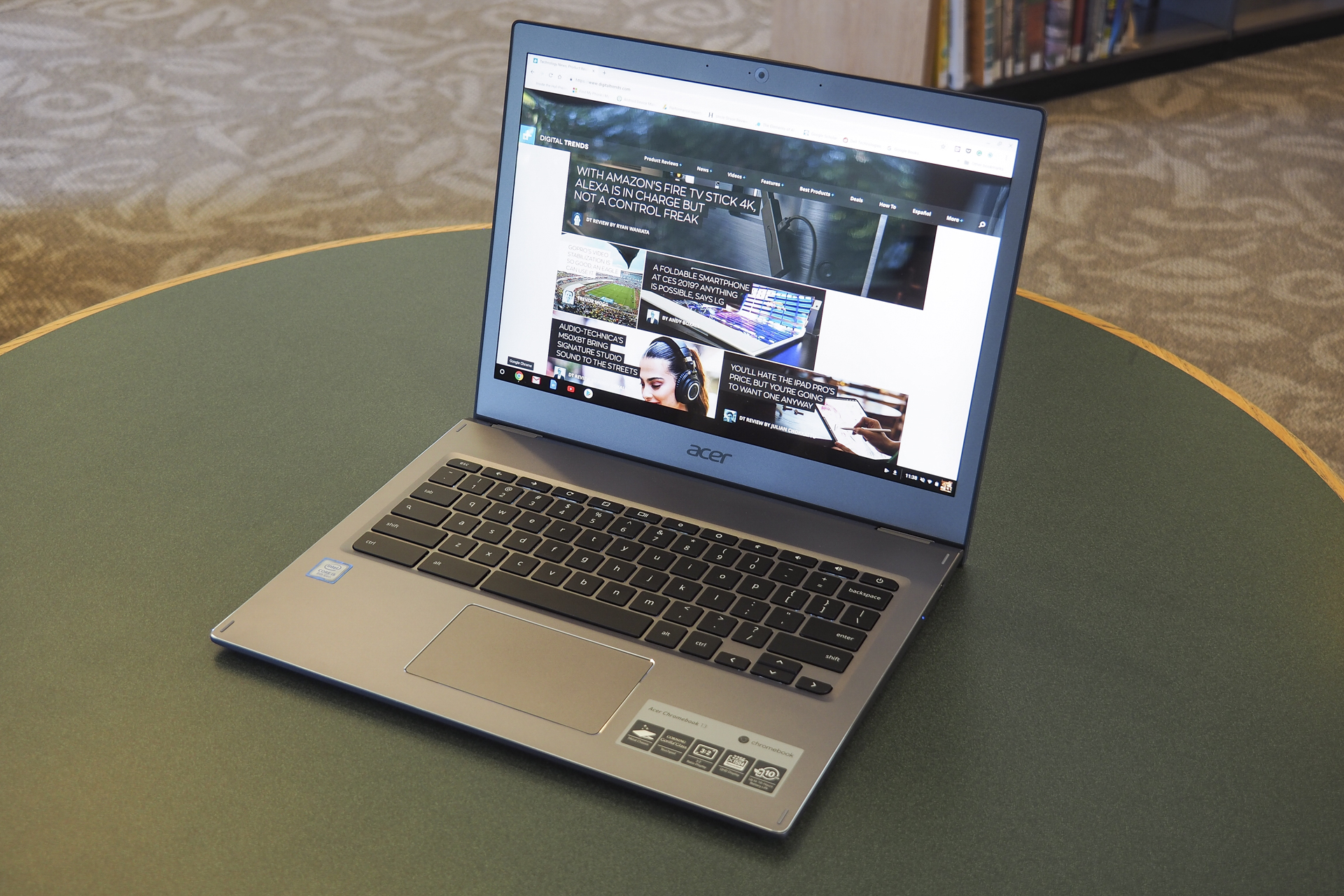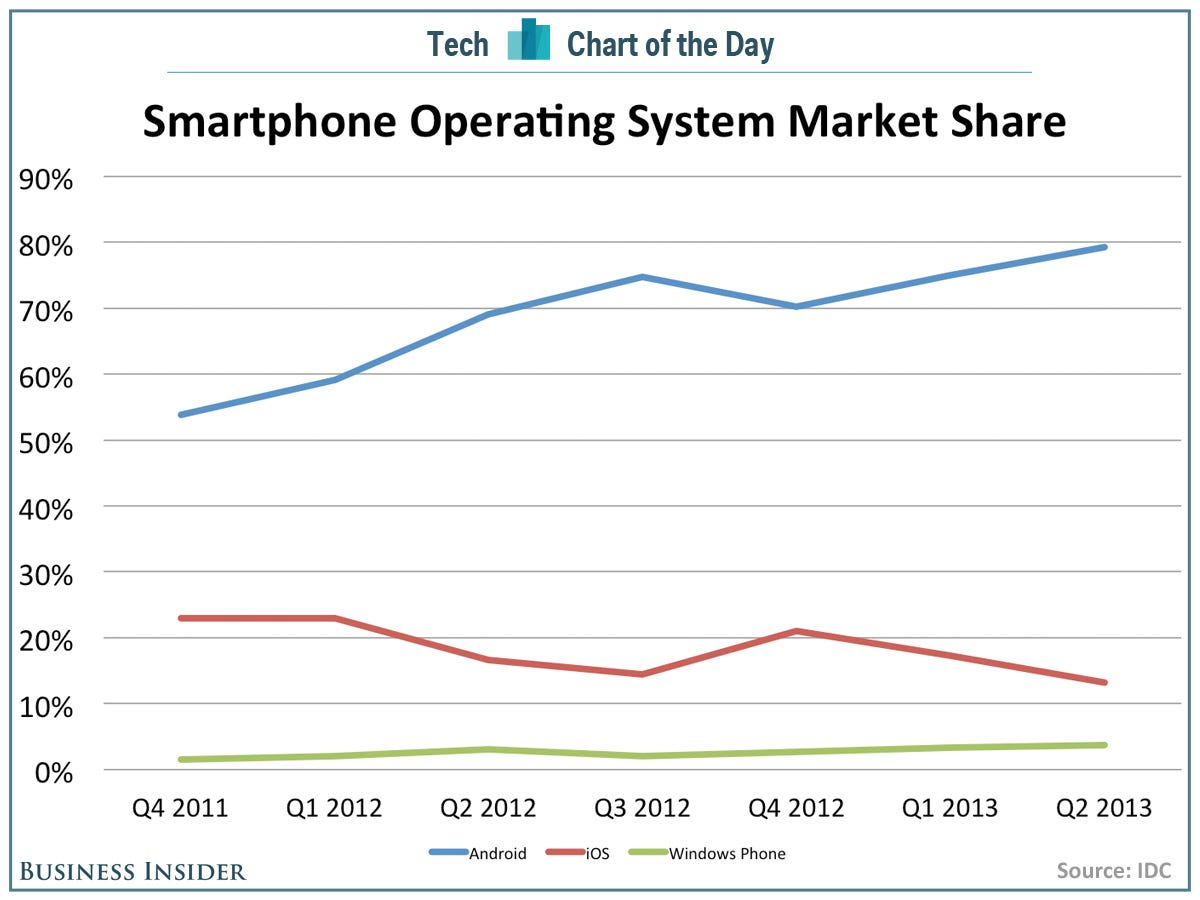Android upgrades are a pivotal aspect of the smartphone experience, influencing user satisfaction and device performance. As the Android ecosystem thrives on its open-source platform, each Android manufacturer has the unique responsibility to deliver timely updates, such as the recent Android 4.4 KitKat update. While some, like Google with its Nexus devices, are known for swift upgrade performance, others have been criticized for their sluggish response. The ongoing support for devices and how manufacturers handle transitions to new versions greatly affect consumer trust. In this report, we will examine how various manufacturers have fared in offering Android upgrades and their commitment to enhancing user experience.
When discussing operating system enhancements within the Android environment, it becomes vital to consider how device makers manage the rollouts of new software iterations. These updates, often referred to as upgrades, not only introduce fresh features but also work to improve overall device performance and security. Companies like Google, known for its Nexus lineup, have set a standard with fast updates, while others may struggle in informing users about the availability of newer versions such as the KitKat update. The differentiation between various manufacturers in this realm can significantly affect the user experience, highlighting the importance of reliable post-sales support. As we delve deeper into the upgrade performance of notable brands, it is essential to evaluate their strategies and user communication.
The Importance of Android Upgrades
When it comes to Android devices, the significance of timely software upgrades cannot be overstated. Users rely on these updates not just for new features, but for security patches and overall device performance enhancement. Upgrades ensure that devices stay relevant and can utilize apps optimized for the latest Android version. This necessity explains why manufacturers are frequently evaluated based on their upgrade policies. Customers are increasingly becoming aware of the differences in upgrade performance among manufacturers, leading to informed choices when purchasing new devices.
Moreover, the open-source nature of Android means that manufacturers can implement their unique modifications on top of the base OS, making the upgrade process even more crucial. While some manufacturers like Motorola excel in delivering quick updates, others lag behind, leaving users frustrated. The disparity in upgrade timelines highlights the responsibility manufacturers have to their customers and the importance of communication in keeping users informed about their devices’ upgrade paths.
Android Upgrades: A Focus on KitKat
The Android KitKat update, released in 2013, is a classic case illustrating the varying responsiveness of Android manufacturers to update requests. Manufacturers such as Motorola and Google were quick to roll out the new version, enhancing user experience by introducing optimizations and new features. In contrast, companies like Samsung and LG struggled with the rollouts, causing their loyal users to feel neglected. This variation in performance can significantly impact customer loyalty and brand reputation.
As Android 4.4 support rolled out, it became clear that users of Nexus devices, including Nexus 4 and Nexus 7, would enjoy timely upgrades directly from Google. This established a benchmark that other manufacturers were expected to follow. Those brands that failed to keep pace with KitKat updates faced scrutiny and criticism, underscoring the competitive nature of the Android ecosystem.
Manufacturer Performances in Android Upgrades
Evaluating manufacturer performance in Android upgrades is essential for understanding how well they manage the complexities of Android’s open ecosystem. Motorola, for example, quickly became a model for other manufacturers by prioritizing KitKat updates and maintaining transparent communication with customers. Their proactive approach not only improved user satisfaction but also set a standard that competitors were measured against.
Conversely, manufacturers like Samsung and LG, which delayed their KitKat upgrades, faced backlash from consumers frustrated by the lack of communication regarding their devices. This inconsistency in upgrade performance showcases the risk manufacturers take when they fail to provide timely updates, as it can drive potential buyers to brands known for better support, thus altering the market landscape.
Nexus Devices and Upgrade Expectations
Nexus devices have become synonymous with the promise of immediate Android upgrades. With each new Android version released, Nexus users typically receive updates shortly after launch, setting a high expectation for other devices in the marketplace. Google’s commitment to keeping their Nexus line updated ensures that these devices serve as benchmarks for performance, support, and user experience.
This clearly outlined upgrade path has not only made Nexus devices popular among consumers who prioritize timely updates, but it has also pushed other Android manufacturers to improve their upgrade strategies. As the Android 4.4 KitKat update demonstrated, the disparity in how quickly manufacturers deploy upgrades further emphasizes the need for users to carefully consider which devices they purchase, especially if they value staying current with the latest software.
Transparency in Android Updates
Transparency from manufacturers regarding their Android upgrade plans is crucial in maintaining customer trust. Companies like HTC and Motorola have excelled in providing updates about their progress on KitKat rollouts, allowing users to stay informed and engaged. This openness helps to mitigate frustration and enhance brand loyalty, as customers feel recognized and valued.
On the other hand, the silence from brands like Samsung regarding their plans only fuels customer dissatisfaction and uncertainty. This discrepancy in communication practices illustrates not just differences in updating speed but also varying corporate philosophies on customer relations. Clear communication can significantly enhance user satisfaction and, in the long run, loyalty to the brand.
Assessing Upgrade Performance: What Matters
When assessing the performance of Android manufacturers in delivering upgrades, several factors come into play. Speed and efficiency in rolling out updates are critical, but so is the ability to maintain user-friendly communication throughout the process. Companies that combine both aspects tend to have stronger reputations for customer service, as consumers appreciate the transparency and assurance that their device will receive the latest software.
Additionally, the longevity of device support also influences user perceptions. Manufacturers who commit to longer support periods not only enhance the value of their products but also bolster customer trust. The experience with Android 4.4 support showed that users want assurance beyond their initial purchase, leading many to favor brands that stand behind their devices with consistent software support.
The Future of Android Upgrades
As the Android ecosystem continues to evolve, the expectations for timely upgrades and performance enhancements will only increase. With advancements in technology and growing consumer awareness, manufacturers will need to prioritize upgrades and ensure that their devices remain relevant through continuous software support. The response to Android 4.4 KitKat’s rollout has proved that users are willing to bifurcate their loyalty based on a manufacturer’s upgrade efficiency and transparency.
Looking ahead, it is vital that Android manufacturers not only enhance their upgrade processes but also communicate effectively with customers. This evolution will be essential in fostering brand loyalty and maintaining competitiveness in a market that increasingly values user experience and satisfaction. Ultimately, those brands that prioritize customer engagement and prioritize delivering timely updates are likely to emerge as leaders in the Android landscape.
The Role of Consumer Reviews in Upgrades
Consumer reviews play an essential role in how manufacturers are perceived regarding their upgrade performances. Users often share their experiences on forums and social media, influencing potential buyers’ decisions. Positive feedback about swift Android upgrades, particularly for the KitKat update, enhances a brand’s reputation and encourages new customers to opt for their devices.
Conversely, negative reviews regarding update delays can mar a manufacturer’s image, pushing customers towards competitors who are more diligent with their software support. In today’s information age, where consumers have significant access to reviews and discussions about devices, manufacturers must be vigilant about their upgrade practices to maintain a positive public perception.
Navigating Android Upgrade Choices
For consumers navigating their choices in the Android marketplace, understanding the difference in manufacturers’ upgrade performances becomes critical. Decisions about which device to purchase will likely hinge on whether users prioritize timely software updates and the supporting ecosystems surrounding those devices. This positioning becomes even clearer when looking at User Experiences with Android 4.4 KitKat as a benchmark.
Manufacturers like Google with their Pixel series or Motorola show strong commitment to timely updates, while others may lag behind. As consumers become more educated about these differences, they are empowered to choose devices that align with their expectations for support and performance. This shift in consumer behavior will ultimately shape the future practices of Android manufacturers.
Frequently Asked Questions
What are the key benefits of Android upgrades, particularly with the KitKat update?
Android upgrades, especially the KitKat update (Android 4.4), enhance device performance by optimizing resource management and improving user interface. Users can expect better multitasking and improved battery life, resulting from efficient hardware utilization. Additionally, the KitKat update introduces new features that enhance user experience, like the immersive full-screen mode and enhanced Google Now capabilities.
How do different Android manufacturers handle KitKat upgrades?
Android manufacturers vary significantly in their approach to KitKat upgrades. Companies like Motorola excelled by quickly rolling out updates for devices such as the Moto X, often outpacing even Nexus devices. Others, like Samsung and LG, showed slower response times or provided limited information, leading to customer frustration. The transparency and commitment of manufacturers to upgrade performance greatly influence user satisfaction.
Are Nexus devices guaranteed to receive the latest Android upgrades, including KitKat?
Yes, Nexus devices are designed to receive the latest Android upgrades promptly, including KitKat. Historically, Google has prioritized these devices to ensure timely updates, typically initiating rollouts within days of a new OS release. While some delays may occur, such as the recent slightly extended wait for Nexus 4 and Nexus 7 with KitKat, the overall upgrade commitment remains strong.
Why is the upgrade performance of Android manufacturers critical for consumers?
The upgrade performance of Android manufacturers is crucial for consumers because it impacts the longevity and usability of devices. Timely upgrades to the latest Android versions like KitKat ensure users have access to new features, improvements, and security updates. A manufacturer’s commitment to ongoing support directly affects customer satisfaction and device value over time.
What can users do if their Android device has not received the KitKat update?
If your Android device has not received the KitKat update, users can check with their manufacturer for update schedules and support forums for any unofficial upgrade options. Alternate paths may include custom ROMs for advanced users, but these carry risks and may void warranties. Staying informed through manufacturer sites and technology news can help users anticipate future updates.
How does Android’s open nature affect upgrade timelines and experiences for users?
Android’s open nature allows manufacturers to customize the OS, leading to diverse user experiences but also inconsistent upgrade timelines. While this flexibility fosters innovation, it can result in delays for upgrades like KitKat, as manufacturers balance customization with performance. Users must choose devices from manufacturers known for timely support to avoid frustrating upgrade experiences.
What is the significance of the Android 4.4 support period for manufacturers?
The Android 4.4 support period is significant for manufacturers as it defines the expectation for ongoing support and updates for devices within a standard 18-month window. This timeframe ensures that devices remain relevant and secure, providing users with the latest enhancements and fixes. Manufacturers’ adherence to this support period is essential for maintaining customer trust and satisfaction.
What role does transparency play in the upgrade process for Android manufacturers?
Transparency plays a vital role in the upgrade process for Android manufacturers, as it helps build trust with customers. Companies like Motorola and HTC communicate regularly about upgrade timelines and progress, improving user satisfaction. In contrast, lack of communication or updates, as seen with Samsung or LG during the KitKat rollout, can lead to frustration and dissatisfaction among users.
How can users find the latest information on Android 4.4 KitKat upgrades?
Users can find the latest information on Android 4.4 KitKat upgrades by consulting dedicated upgrade lists and manufacturer support websites. Additionally, technology news outlets frequently update their coverage on device upgrades, providing insights into timelines and device eligibility.
Are there any challenges with Android upgrades related to performance issues post-update?
Yes, some users may experience performance issues after an Android upgrade, such as KitKat, due to software bugs, hardware incompatibilities, or resource management changes. While updates generally enhance performance, it’s crucial for manufacturers to address any emerging issues promptly through follow-up patches to maintain user satisfaction.
| Manufacturer | Upgrade Status | Communication |
|---|---|---|
| Motorola | Excellent: Early upgrades for Moto X and Moto G. | Transparent with continuous updates on upgrade status. |
| Good: Rollouts started nearly a month post-release, mainly due to bugs. | Typically quick to update, but delayed this time. | |
| HTC | Solid effort: Failed to meet the original goal for all devices. | Forthright communication regarding progress and delays. |
| Samsung | Poor: No clear upgrade plans communicated, limited Note 3 rollout. | Lack of communication disappoints customers. |
| LG | Very poor: Limited updates for G2 in Korea only. | No official details shared about other devices. |
| Sony | Subpar: Plans shared but no updates delivered. | Lack of firm timelines affects customer expectations. |
| Asus | Failure to communicate: No updates provided cherry-picking which devices will be upgraded. | Poor communication on upgrade plans. |
| Acer | Minimal: Most devices only receiving maintenance updates. | Very limited communication regarding future updates. |
Summary
Android upgrades remain a crucial aspect of the smartphone experience, as they determine how long a device will remain up-to-date and secure. Based on recent evaluations, it’s clear that manufacturers display a varying commitment to providing timely updates to their users. While some, like Motorola and Google, have shown commendable progress, others like LG and Samsung have fallen significantly behind. As the industry continues to evolve, it’s essential for consumers to choose their devices wisely, considering not just the specs at purchase, but the upgrade reliability that will accompany their smartphone journey.



